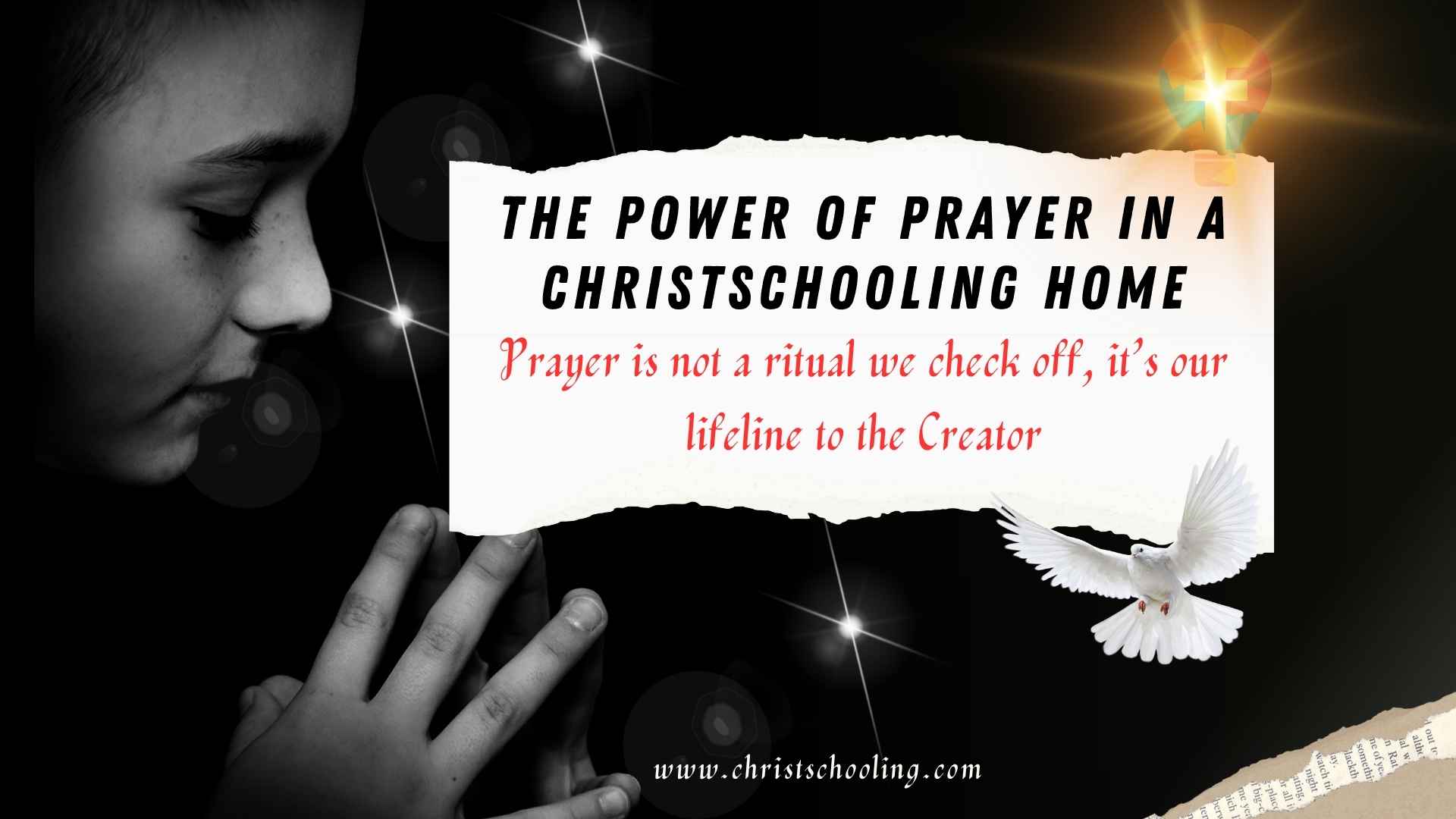Homeschooling is a sacred calling—an invitation to partner with God in shaping the hearts and minds of the next generation.
While curriculum choices, learning schedules, and educational goals all matter, nothing fuels a Christ-centered homeschooling journey more than prayer.
Prayer is not a ritual we check off; it’s our lifeline to the Creator. It’s where we gain strength when we’re weary, wisdom when we’re uncertain, and peace when chaos threatens our calm.
In a homeschooling home, prayer is not optional—it’s essential.
1. Prayer as the Foundation of Homeschooling 🕊️
The Bible reminds us in Proverbs 3:5–6:
“Trust in the Lord with all your heart and lean not on your own understanding; in all your ways submit to him, and he will make your paths straight.”
As homeschooling parents, we wear many hats—teacher, caregiver, mentor, disciplinarian—but we cannot do any of it in our own strength.
Prayer invites God into every aspect of home education: from curriculum planning to behavior correction, from emotional meltdowns to math frustrations.
Philippians 4:6–7 gives us our posture:
“Do not be anxious about anything, but in every situation, by prayer and petition, with thanksgiving, present your requests to God…”
We build on the Rock when we pray first and teach second.
2. Praying With and For Your Children 🙌
One of the greatest gifts you can give your children is to cover them in prayer.
Begin the homeschool day with a simple morning prayer—inviting the Holy Spirit to lead, guide, and fill your home with peace and joy.
Let your children hear you pray not only for them, but with them:
- Pray before meals and lessons.
- Pause to pray during moments of frustration.
- End the day with gratitude and reflection through prayer.
James 5:16 encourages us:
“The prayer of a righteous person is powerful and effective.”
Make prayer a rhythm of your home, like Hannah did for Samuel (1 Samuel 1:27). She not only prayed for a child—she prayed over him and dedicated his life to God.
That posture changes generations.
3. Teaching Children to Pray 💬
Jesus’ disciples once said, “Lord, teach us to pray” (Luke 11:1). Prayer isn’t automatic—it’s taught, modeled, and nurtured.
Start small:
- Teach your children to thank God for blessings.
- Help them confess sin and ask for help in areas they struggle.
- Show them how to pray for others, even those who are difficult to love.
1 Thessalonians 5:17 tells us:
“Pray without ceasing.”
That doesn’t mean children must sit still all day with eyes closed—but it does mean they can grow up in an atmosphere where prayer is as natural as breathing.
4. Turning Homeschool Struggles Into Prayer Opportunities ⛅
Homeschooling is full of challenges—tantrums over times tables, tears over writing, exhaustion, self-doubt. Instead of hiding those struggles, bring them to the foot of the cross.
Prayer turns battles into breakthroughs. The moment your child slams a book shut and yells, “I can’t do this!” becomes a moment to stop, hold hands, and ask God for peace and perseverance.
Daniel, even when threatened with death, “got down on his knees three times a day and prayed” (Daniel 6:10). He didn’t pray because life was easy—he prayed because life was hard.
When your child sees you pray in difficult moments, they learn where their help comes from (Psalm 121:1–2).
5. Real-Life and Biblical Models of a Prayerful Life 🌿
In 1 Samuel 1, we meet Hannah, a mother who birthed her son through prayer and released him through prayer. Her quiet strength and deep trust in God shaped Samuel, who became one of Israel’s greatest prophets.
Timothy, the young disciple Paul mentored, was also shaped by the prayers and faith of his mother Eunice and grandmother Lois (2 Timothy 1:5). Their home was a seedbed for faith and calling.
Even Jesus, the Son of God, withdrew to lonely places to pray (Luke 5:16). He showed us that prayer was not reserved for the desperate—it was a daily necessity, even for the divine.
Real-life homeschool families often testify that the days they begin with prayer are more peaceful and purposeful. Even when lessons fall apart, if prayer is present, peace remains.
6. Making Prayer a Lifestyle, Not a Checkbox 🌸
Incorporate prayer into the natural rhythm of life. Here are some simple ways to cultivate a culture of prayer in your home:
- Morning Prayer: Invite God into the day before lessons begin.
- Prayer Journal: Encourage kids to write or draw their prayers.
- Prayer Wall or Jar: Write prayer needs and praises throughout the week.
- Family Worship Time: Set aside one evening a week for worship, Scripture, and family intercession.
Prayer doesn’t need to be fancy. It just needs to be sincere.
Jesus said in Matthew 18:20:
“For where two or three gather in my name, there am I with them.”
Even your tiny homeschool around the dining table becomes holy ground when prayer is at the center.
✨ Conclusion: Prayer Makes the Difference
Prayer is not the “extra” in a Christian homeschooling home—it’s the engine. It’s where God whispers direction, breathes peace into chaos, and transforms hearts.
Every time you choose prayer over panic, you’re sowing seeds of faith into your children. You’re showing them that God is not just part of their lessons—He is the lesson. 🙌
Dear parent, as you homeschool, you are not alone. The same God who equipped Moses, Esther, Daniel, and Mary is equipping you.
Let prayer be your anchor and your anthem.
“Unless the Lord builds the house, the builders labor in vain.”
— Psalm 127:1
Build your homeschool on the foundation of faith, prayer, and the Word, and you will not be disappointed. 💖

Leave a Reply